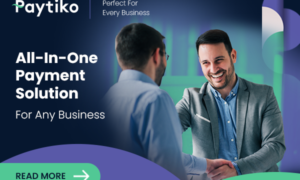Mobile wallets were the most popular online payment method globally in 2022, as they accounted for about half of global e-commerce payment transactions in that year. That is just one example of alternative payment methods. In the fast-evolving eCommerce landscape, integrating diverse and secure payment alternatives has become a linchpin for ensuring customer satisfaction and a competitive edge. Therefore, it’s necessary to employ strategies that can help you overcome the most common obstacles related to the integration process.
1) Technical and Technological Obstacles
Each payment method, from digital wallets to cryptocurrencies, has a unique set of integration protocols and APIs that can be complex and multifaceted. Moreover, older systems might not be compatible with new payment technologies or might require substantial modifications. Not to mention ensuring safe, secure, and compliant data management across multiple payment platforms while providing a smooth user experience.
How to overcome technical and technological obstacles
- Leverage API solutions: Use reliable APIs and SDKs provided by APM platforms to ease the integration process. Work with developers or agencies that have expertise in integrating diverse payment methods.
- Update legacy systems: Consider gradual migration or upgrades to modern, flexible technology platforms that can easily integrate with various alternative payment methods (APMs). Adopt a microservices architecture to enable easier implementation and updating of different payment methods.
- Centralize data management: Adopt a unified data management strategy, ensuring secure and compliant handling of transaction data across all payment platforms.
2) Security and Compliance Issues
Implementing alternative payment methods, while offering numerous benefits, does bring forward a multitude of security and compliance issues that need to be addressed. It’s crucial to safeguard transaction and customer data across various APMs without compromising the user experience. The same applies to adhering to multiple, often region-specific, regulations and standards such as PCI-DSS for card payments, GDPR for data protection in Europe, or other local financial compliance frameworks. Implementing robust fraud prevention mechanisms adaptable to various APMs is no less important.
How to overcome security and compliance issues:
- Implement robust encryption: Use SSL/TLS protocols to encrypt data transmitted between the customer and the server. Employ end-to-end encryption to safeguard data throughout the payment process.
- Multi-factor authentication (MFA): Implement MFA to enhance the security of user accounts and transaction approvals. Offer additional security layers like OTPs or security questions.
- Secure API integrations: Ensure that APIs used for payment integrations are secured and continuously monitored for vulnerabilities. Regularly update APIs to patch any security flaws and accommodate new security protocols.
- Stay informed on compliance norms: Ensure a dedicated team stays abreast of local and international compliance norms and updates relevant to the payment methods. Subscribe to regulatory updates from official bodies and forums.
3) User Experience (UX) and Usability
The diversity in APMs, each with its own user interaction model, poses a potential threat to maintaining a uniform and intuitive UX, crucial for customer satisfaction and retention. Also the checkout process itself needs to be as smooth as possible, as customers may abandon their carts if the payment process is too complex or lengthy.
Furthermore, inadequate optimization of payment interfaces for mobile users can lead to lower conversion rates.
How to overcome UX and usability challenges:
- Simplify navigation: Employ a clean and intuitive design that guides users through the payment process seamlessly. Use clear, recognizable icons and straightforward language to minimize confusion.
- Streamline checkout: Optimize the checkout process with as few steps as possible. Implement a progress indicator to inform users about the steps involved and their current position in the process.
- Optimize for mobile: Employ a responsive design that ensures functionality and ease of use across all devices. Ensure that all elements are touch-friendly and appropriately sized for smaller screens.
- Diverse payment options: Offer a variety of popular and alternative payment methods to cater to different user preferences. Highlight popular payment options for specific regions prominently.
To sum it up
Integrating alternative payment methods into eCommerce platforms isn’t without its hurdles, with technical aspects, security, and UX being the top three issues. Pragmatic strategies to address them include embracing reliable API solutions, fortifying security protocols, staying abreast of compliance norms, and designing with an unwavering focus on user navigation and satisfaction. Businesses that integrate diverse, secure, and user-friendly APMs will not only enhance customer satisfaction but also strengthen their competitive advantage in the dynamic eCommerce market.



































